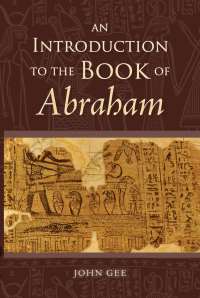Introduction
The goal with the Introduction to the Book of Abraham is to make reliable information about the Book of Abraham accessible to the general reader. Although based on extensive academic research, it is not primarily an academic work.
This volume builds on previous work. My previous book, A Guide to the Joseph Smith Papyri, was prepared after more than a dozen years of answering questions about the Joseph Smith Papyri on a weekly, if not daily, basis. The Guide to the Joseph Smith Papyri was intended to provide up-to-date, reliable, and readily available information on the Joseph Smith Papyri to individuals who have little knowledge of ancient Egypt and perhaps little knowledge of the Latter-day Saints. I would like to think that the guide helped readers understand the issues better. It has sold out. In the meantime, its publisher, the Foundation for Ancient Research and Mormon Studies, no longer exists as such. The need for something like the guide still exists. Further research would have necessitated major revisions of all the chapters. More experience has taught me what I hope are better or clearer ways to explain some of the concepts. Additionally, the guide did not address many topics dealing specifically with the Book of Abraham. As a result, I have rewritten this work from the ground up.
Because the purpose of this Introduction to the Book of Abraham is to make reliable information about the Book of Abraham accessible to the general reader, no specialist knowledge of Egyptology or of The Church of Jesus Christ of Latter-day Saints is assumed. To make it easier for the non-specialist reader, I have given Egyptian terms in their late-period voweled (Coptic) forms rather than using the standard transliteration of earlier time periods, which has no vowels and thus is impossible to pronounce for modern English speakers. Also, the assumption is that the reader is a busy person with many matters begging for attention; therefore, the discussion has been kept concise. In that view, I have tried to make complicated or technical arguments understandable but brief. References have been limited to direct quotations. Those interested in more information may consult the readings listed at the end of each chapter. Because I have had full access to a great deal of unpublished research, not everything that appears in the text is necessarily found in the sources cited.
While I have striven to make this book as accurate as possible, there may still be errors. New evidence that comes to light has had a way of showing that we have been proceeding on the basis of unrecognized and usually unjustified assumptions.
In any case, this work is not an official publication of The Church of Jesus Christ of Latter-day Saints, and it does not necessarily represent the official positions of the Church, Brigham Young University, the Religious Studies Center, Deseret Book, or the Neal A. Maxwell Institute for Religious Scholarship.
